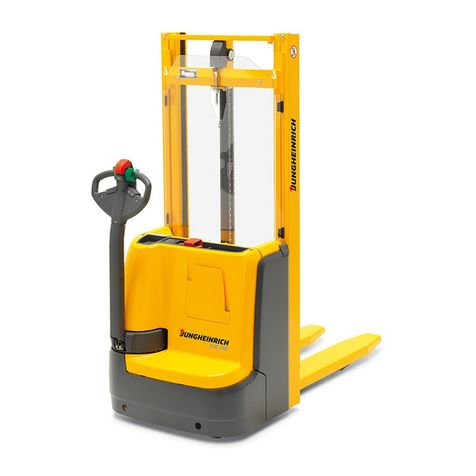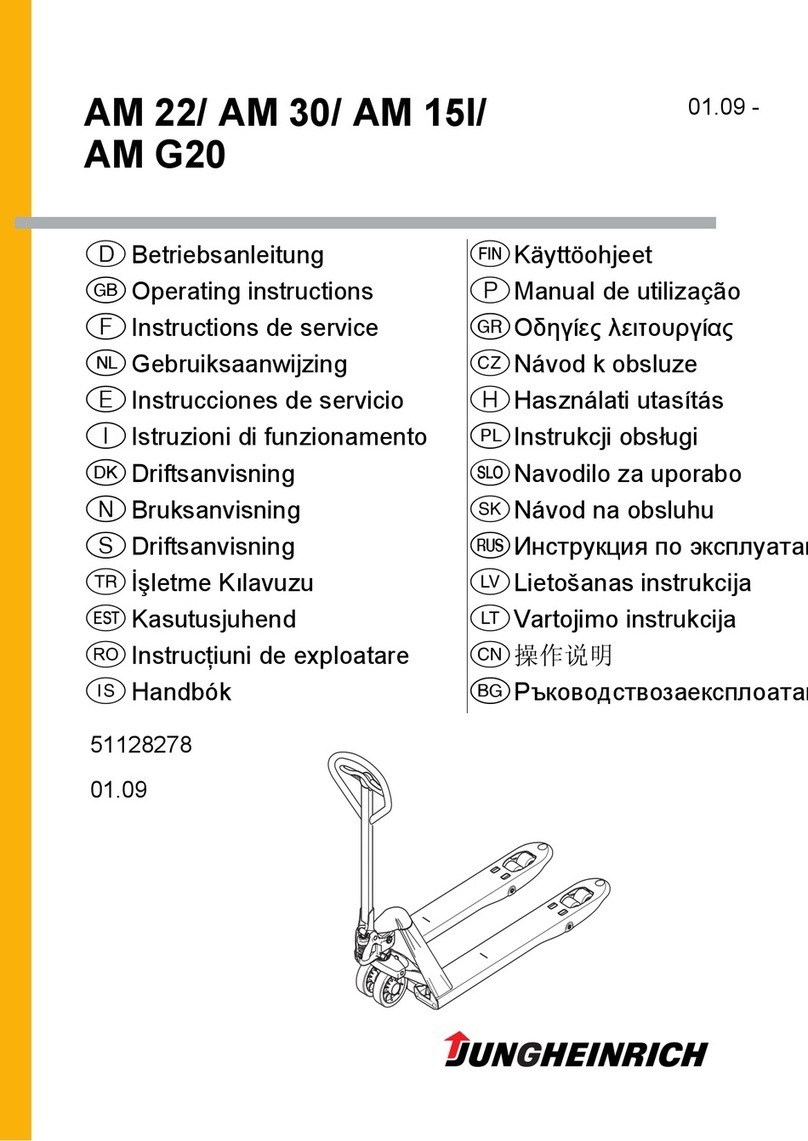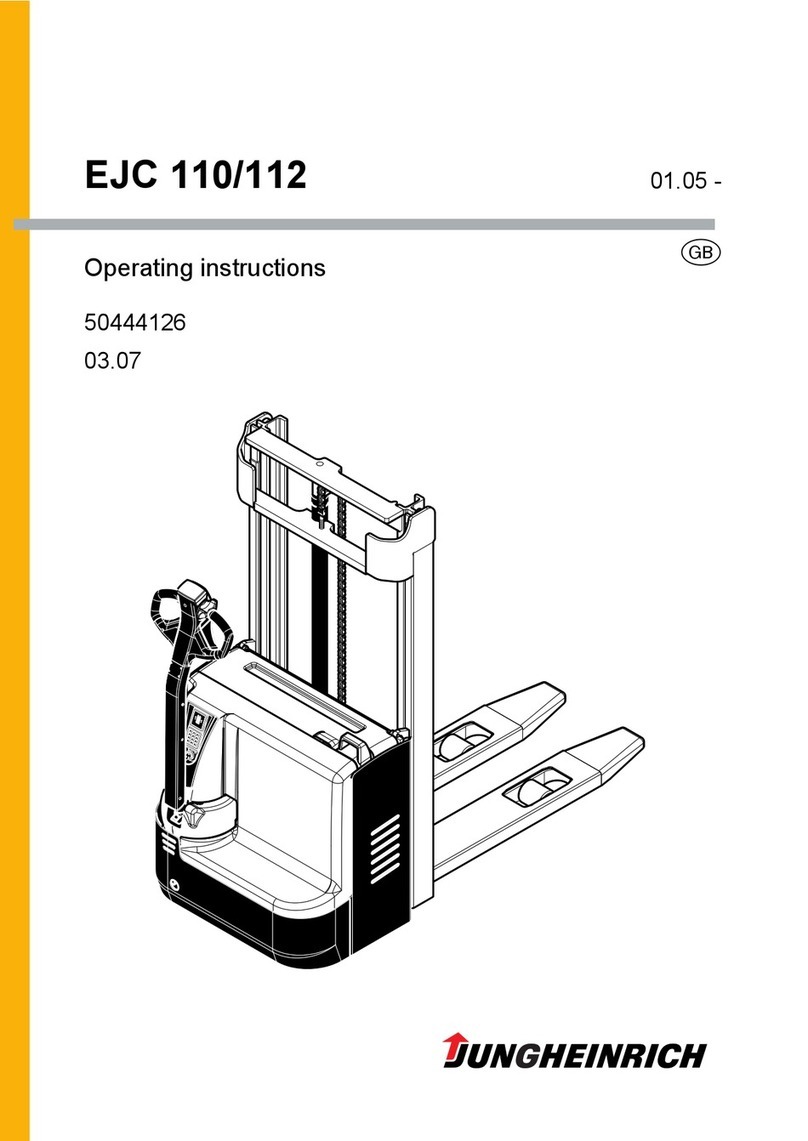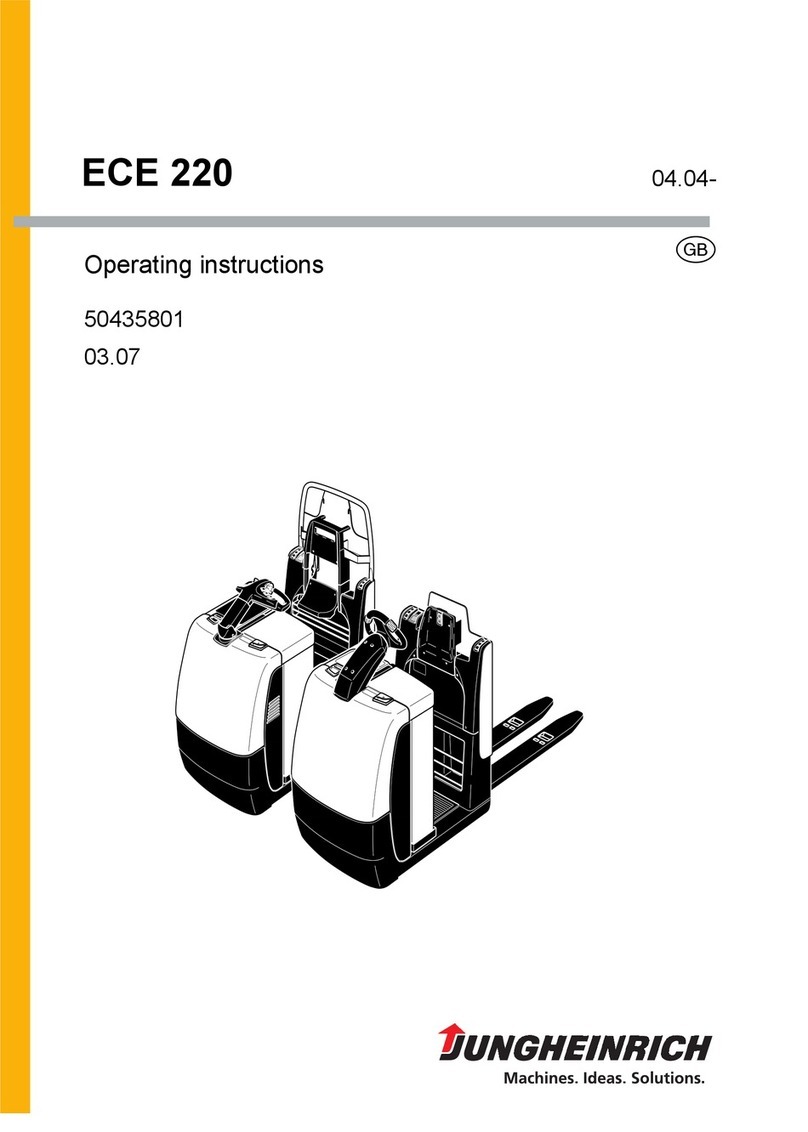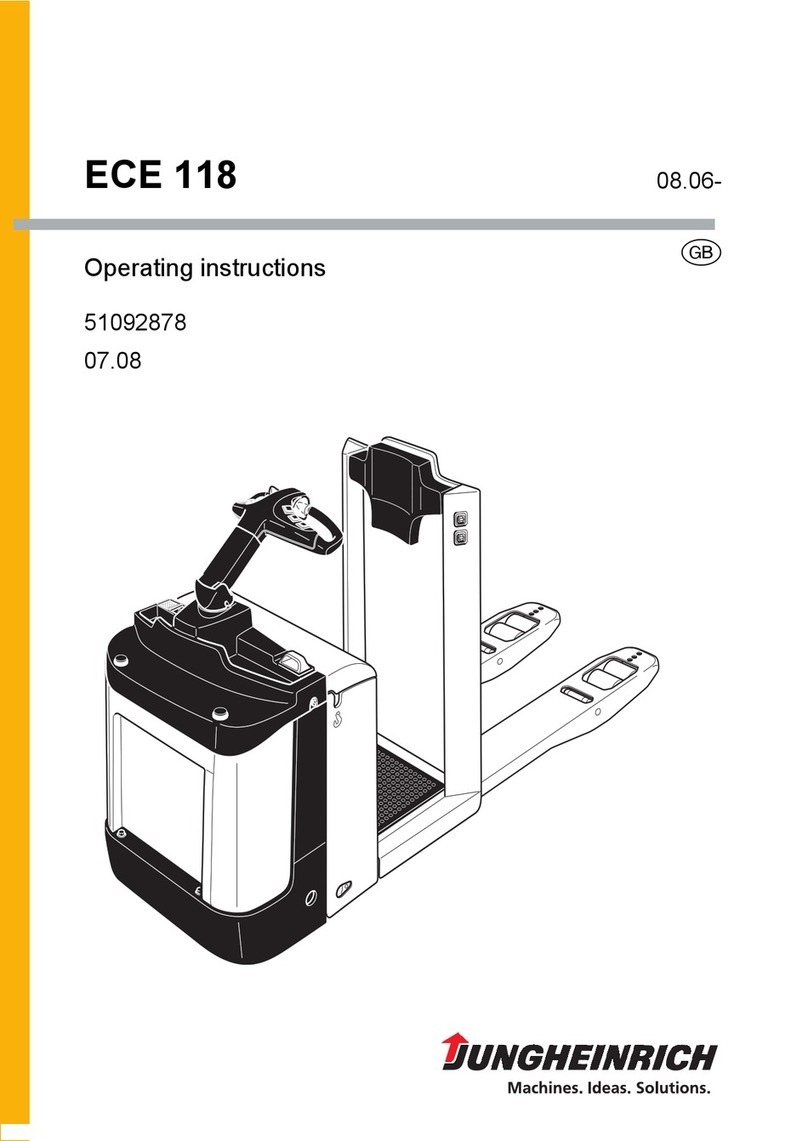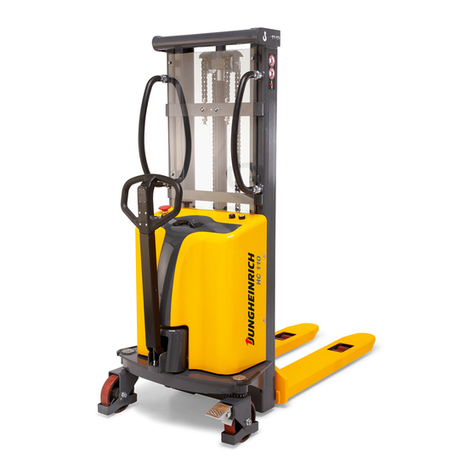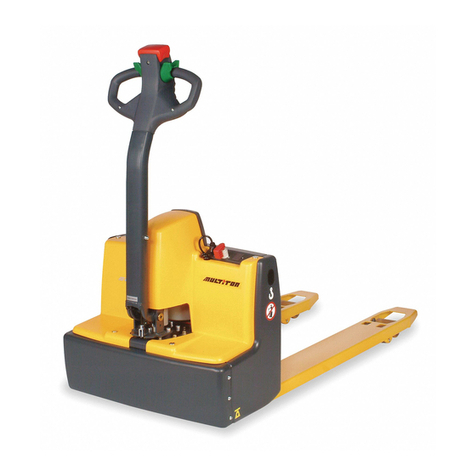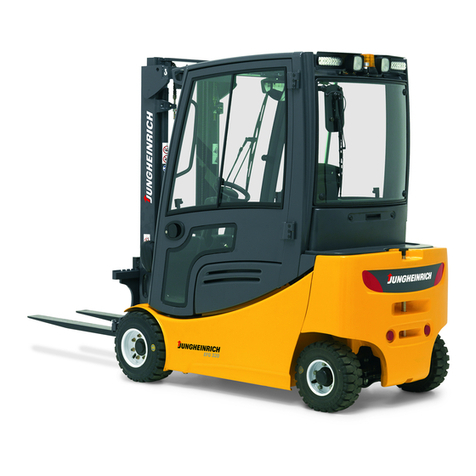
0306.GB
I 2
E Operation
1 Safety Regulations for the Operation of Forklift Trucks ...................... E 1
2 Controls and Displays ......................................................................... E 2
3 Starting up the truck ............................................................................ E 6
4 Using the industrial truck ..................................................................... E 8
4.1 Safety regulations for truck operation ................................................. E 8
4.2 Travelling, Steering, Braking ............................................................... E 9
4.3 Collecting and depositing loads .......................................................... E 12
5 Emergency lowering ............................................................................ E 13
5.1 Park the truck securely ........................................................................ E 14
6 CANCODE keypad (o) ....................................................................... E 14
6.1 Code Lock ........................................................................................... E 14
6.2 Travel programs .................................................................................. E 16
6.3 Parameters .......................................................................................... E 16
6.4 Parameter Settings ............................................................................. E 17
6.5 Travel parameters ............................................................................... E 21
7 Display instrument (CANDIS) (o) ....................................................... E 24
7.1 Discharge monitor function ................................................................. E 25
7.2 Operating hours display ...................................................................... E 25
7.3 Power up test ...................................................................................... E 25
7.4 Troubleshooting .................................................................................. E 26
F Forklift Truck Maintenance
1 Operational safety and environmental protection ................................ F 1
2 Maintenance Safety Regulations ........................................................ F 1
3 Servicing and inspection ..................................................................... F 3
4 Maintenance Checklist ........................................................................ F 4
5 EJC 212 – 220 Maintenance Schedule ............................................... F 6
5.1 Consumables ...................................................................................... F 7
6 Maintenance Instructions .................................................................... F 8
6.1 Preparing the truck for maintenance and repairs ................................ F 8
6.2 Remove the front panel ....................................................................... F 8
6.3 Remove the drive panel ...................................................................... F 8
6.4 Checking the hydraulic oil level ........................................................... F 9
6.5 Flushing the gauze filter, Replacing the gauze filter ........................... F 10
6.6 Replace the filter cartridge .................................................................. F 10
6.7 Checking electrical fuses .................................................................... F 11
6.8 Recommissioning ................................................................................ F 12
7 Decommissioning the industrial truck .................................................. F 12
7.1 Prior to decommissioning: ................................................................... F 12
7.2 During decommissioning: .................................................................... F 12
7.3 Restoring the truck to operation after decommissioning ..................... F 13
8 Safety tests to be performed at intervals and after unusual events
(D: Accident prevention check according to BGV D27 .................... F 13
9 Final de-commissioning, disposal ....................................................... F 13
0306.GB
I 2
E Operation
1 Safety Regulations for the Operation of Forklift Trucks ...................... E 1
2 Controls and Displays ......................................................................... E 2
3 Starting up the truck ............................................................................ E 6
4 Using the industrial truck ..................................................................... E 8
4.1 Safety regulations for truck operation ................................................. E 8
4.2 Travelling, Steering, Braking ............................................................... E 9
4.3 Collecting and depositing loads .......................................................... E 12
5 Emergency lowering ............................................................................ E 13
5.1 Park the truck securely ........................................................................ E 14
6 CANCODE keypad (o) ....................................................................... E 14
6.1 Code Lock ........................................................................................... E 14
6.2 Travel programs .................................................................................. E 16
6.3 Parameters .......................................................................................... E 16
6.4 Parameter Settings ............................................................................. E 17
6.5 Travel parameters ............................................................................... E 21
7 Display instrument (CANDIS) (o) ....................................................... E 24
7.1 Discharge monitor function ................................................................. E 25
7.2 Operating hours display ...................................................................... E 25
7.3 Power up test ...................................................................................... E 25
7.4 Troubleshooting .................................................................................. E 26
F Forklift Truck Maintenance
1 Operational safety and environmental protection ................................ F 1
2 Maintenance Safety Regulations ........................................................ F 1
3 Servicing and inspection ..................................................................... F 3
4 Maintenance Checklist ........................................................................ F 4
5 EJC 212 – 220 Maintenance Schedule ............................................... F 6
5.1 Consumables ...................................................................................... F 7
6 Maintenance Instructions .................................................................... F 8
6.1 Preparing the truck for maintenance and repairs ................................ F 8
6.2 Remove the front panel ....................................................................... F 8
6.3 Remove the drive panel ...................................................................... F 8
6.4 Checking the hydraulic oil level ........................................................... F 9
6.5 Flushing the gauze filter, Replacing the gauze filter ........................... F 10
6.6 Replace the filter cartridge .................................................................. F 10
6.7 Checking electrical fuses .................................................................... F 11
6.8 Recommissioning ................................................................................ F 12
7 Decommissioning the industrial truck .................................................. F 12
7.1 Prior to decommissioning: ................................................................... F 12
7.2 During decommissioning: .................................................................... F 12
7.3 Restoring the truck to operation after decommissioning ..................... F 13
8 Safety tests to be performed at intervals and after unusual events
(D: Accident prevention check according to BGV D27 .................... F 13
9 Final de-commissioning, disposal ....................................................... F 13
